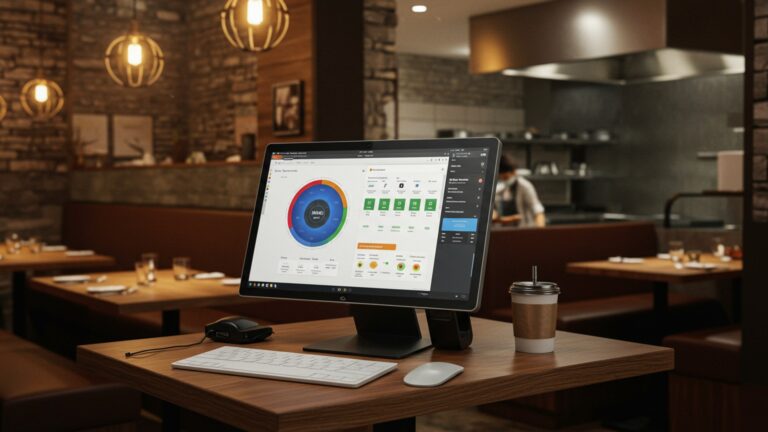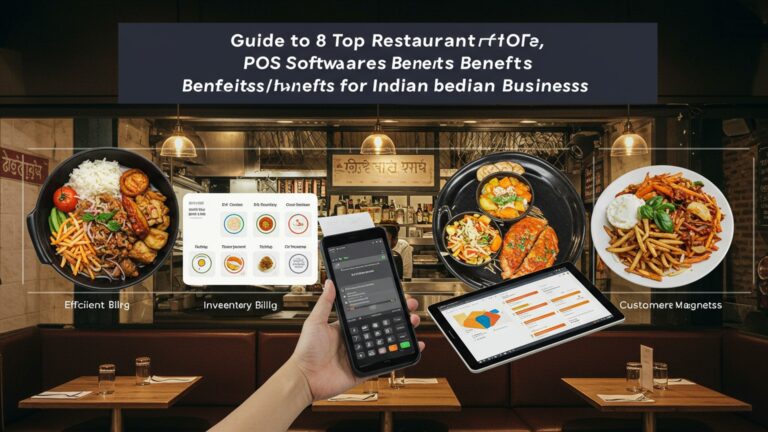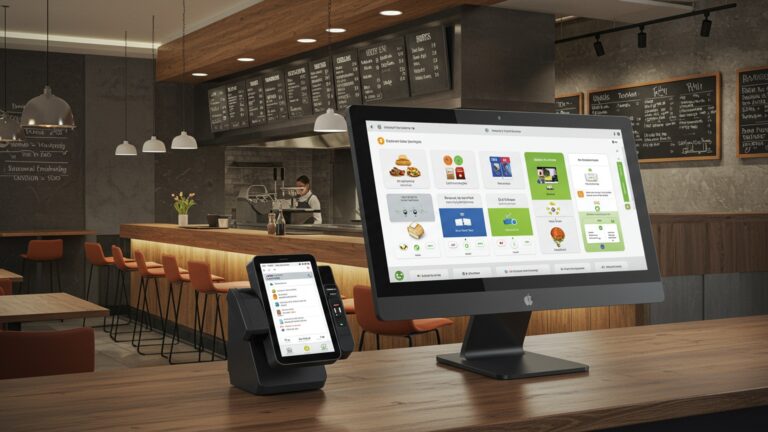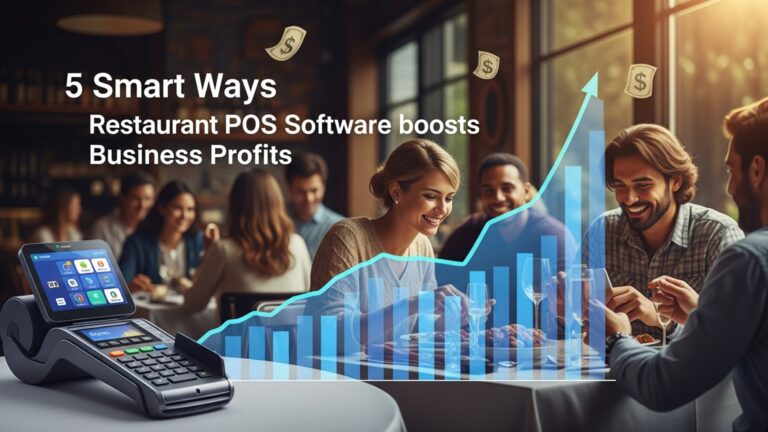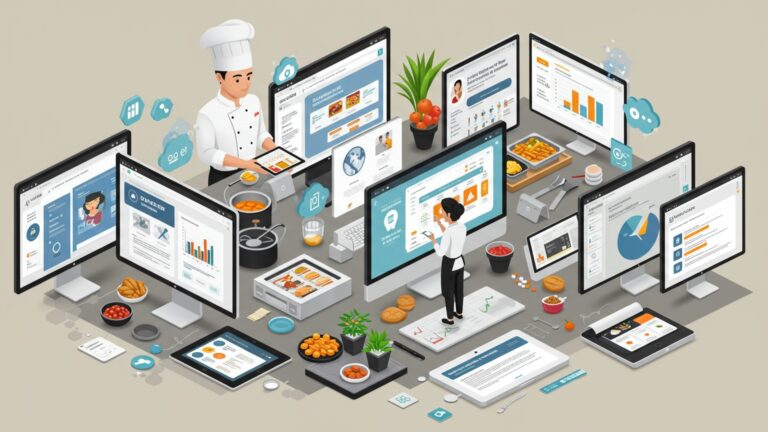10 Reasons Why Android POS for Restaurants in India Boosts Efficiency
The bustling landscape of Indian restaurants demands more than just great food; it requires operational agility to thrive amidst intense competition and evolving customer expectations. Traditional systems often bottleneck service, leading to order inaccuracies and slow table turns, directly impacting profitability. In this rapidly digitalizing era, leveraging an advanced Android POS for restaurants India isn’t merely an upgrade; it’s a strategic imperative. Modern Android-based solutions integrate seamlessly with popular delivery platforms and digital payment gateways like UPI, offering real-time inventory management and streamlined KOTs. This technological shift empowers establishments, from small cafes to multi-outlet chains, to cut costs, enhance customer experience. unlock unprecedented operational efficiency, transforming everyday challenges into opportunities for growth and sustained success in a dynamic market.
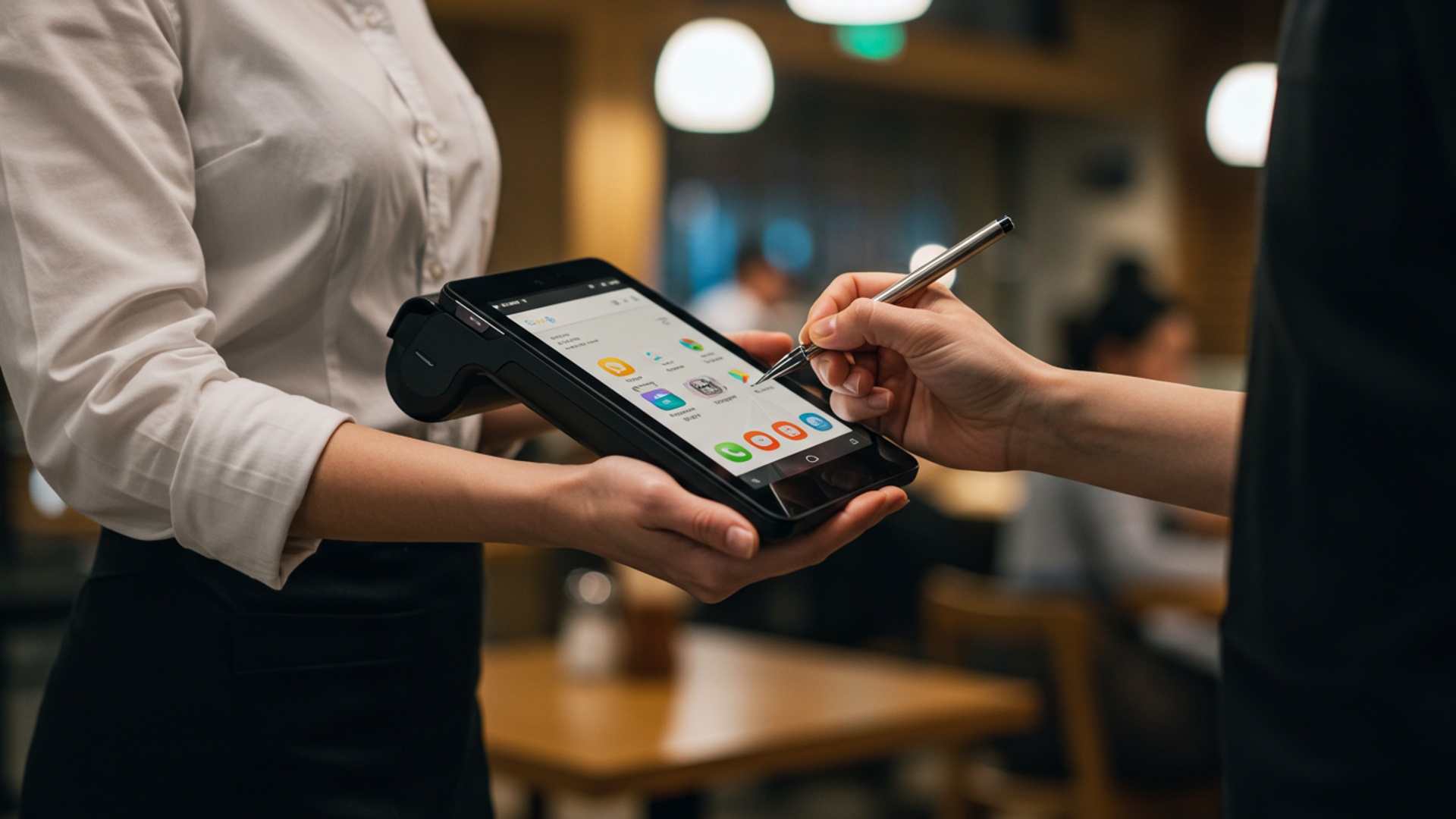
1. Unmatched Cost-Effectiveness for Indian Restaurants
One of the primary advantages that makes an Android POS for restaurants India an increasingly popular choice is its remarkable cost-effectiveness. Unlike traditional proprietary POS systems that often demand significant upfront investment in specialized hardware, Android solutions leverage readily available and more affordable commercial off-the-shelf (COTS) devices like tablets and smartphones.
- Reduced Hardware Costs: Android devices are manufactured by numerous companies, leading to competitive pricing. A high-quality Android tablet or smartphone costs a fraction of what a dedicated, often single-purpose, POS terminal might. This significantly lowers the initial capital expenditure, making it accessible even for small and medium-sized restaurants, cafes. cloud kitchens across India.
- Lower Maintenance Expenses: The widespread availability of Android hardware also translates to easier and cheaper maintenance. If a device needs repair or replacement, it’s often simpler and less expensive to source parts or a new unit compared to specialized POS hardware.
- Flexible Software Subscriptions: Many Android POS providers offer cloud-based, subscription models for their software. This allows restaurants to pay a monthly or annual fee, converting a large capital expense into a manageable operational cost, which is particularly beneficial for businesses managing cash flow tightly.
For instance, a bustling chai stall looking to modernize its operations can equip itself with an Android tablet for ordering and billing for a fraction of the cost of a traditional setup, immediately boosting efficiency without breaking the bank.
2. Intuitive User Experience and Rapid Staff Adoption
The familiarity of the Android operating system is a huge boon for restaurants in India, particularly when it comes to staff training and adoption. Most employees, from servers to cashiers, are already adept at using Android smartphones and tablets in their daily lives.
- Minimal Training Required: The interface of an Android POS system often mirrors the familiar touch-and-swipe gestures of a smartphone. This drastically reduces the learning curve for new staff members, allowing them to become proficient with the system in a matter of hours, not days. This saves valuable time and resources typically allocated to extensive training programs.
- Higher Employee Comfort: Staff are generally more comfortable and confident using a system that feels familiar. This comfort translates into faster order taking, accurate billing. smoother operations during peak hours, directly impacting customer satisfaction.
- Reduced Error Rates: An intuitive interface can also minimize human errors in order taking or payment processing, leading to fewer re-dos and less food wastage, contributing to overall operational efficiency.
A QSR in a metropolitan city, for example, can onboard new seasonal staff much faster during festivals thanks to the ease of use of their Android POS, ensuring seamless service even with a fluctuating workforce.
3. Remarkable Flexibility and Customization Capabilities
The open-source nature of the Android platform grants unparalleled flexibility and customization options, allowing restaurants to tailor their POS system to their unique operational needs. This adaptability is a significant advantage for an Android POS for restaurants India, where diverse culinary concepts and business models exist.
- Tailored Workflows: Unlike many rigid proprietary systems, an Android POS can often be customized to fit specific ordering processes, kitchen display setups (KDS), or table management strategies. Whether you run a fine-dining restaurant with complex table layouts or a quick-service eatery needing rapid order processing, the system can be adapted.
- Integration with Existing Software: Android’s open architecture makes it easier to integrate with other essential restaurant software. This could include third-party inventory management systems, customer relationship management (CRM) tools, loyalty programs, or accounting software. This creates a unified ecosystem that streamlines various aspects of the business.
- Scalable Features: As your restaurant grows or its needs evolve, an Android POS can be updated or expanded with new features and integrations without requiring a complete system overhaul. This ensures your technology can keep pace with your business development.
Consider a multi-cuisine restaurant that needs to manage separate kitchen sections for different food types. An Android POS can be configured to route orders to the correct kitchen display unit (KDU) seamlessly, improving kitchen efficiency and order accuracy.
4. Robust Ecosystem of Third-Party Applications
The vast and continually growing Android app ecosystem is a powerful asset for restaurants utilizing an Android POS for restaurants India. This extensive marketplace offers a plethora of specialized applications that can enhance every facet of restaurant operations.
- Integrated Solutions: Beyond basic POS functionalities, restaurants can integrate apps for advanced inventory management, employee scheduling, online ordering platforms, food delivery aggregators, customer feedback systems. even sophisticated data analytics tools.
- Comprehensive Business Management: Instead of juggling multiple disparate systems, an Android POS can become the central hub for managing your entire restaurant business. For example, a single Android tablet can handle orders, track inventory levels, manage staff shifts. process payments.
- Future-Proofing: The dynamic nature of the Android app market means that new, innovative solutions are constantly emerging. Restaurants can easily adopt these advancements to stay competitive and continually improve their services without being locked into a single vendor’s limited offerings.
Imagine a popular cafe that wants to introduce a loyalty program. Instead of investing in separate hardware, they can simply integrate a loyalty app with their existing Android POS, allowing customers to earn and redeem points directly at the counter.
5. Reliable Offline Operation for Uninterrupted Service
In a country like India, where internet connectivity can sometimes be inconsistent, the ability of an Android POS for restaurants India to function offline is a critical advantage. This ensures that business operations continue smoothly even during network outages, preventing potential revenue loss and customer frustration.
- Seamless Transaction Processing: Modern Android POS systems are designed to store transaction data locally on the device when internet connectivity is lost. This means orders can still be taken, bills can be generated. payments (cash or offline card methods) can be processed without interruption.
- Automatic Data Synchronization: Once the internet connection is restored, the system automatically syncs all the accumulated offline data with the cloud server. This ensures that all sales, inventory changes. other operational data are updated accurately, providing a complete picture of the day’s business.
- Business Continuity: This offline capability is invaluable for restaurants located in areas prone to internet fluctuations or for food trucks and outdoor catering events where reliable Wi-Fi might not always be available. It guarantees business continuity, maintaining efficiency and customer service standards regardless of network status.
A restaurant in a tourist destination, relying heavily on card payments, faced a sudden internet outage. Their Android POS system, with its offline mode, allowed them to continue taking orders and processing payments using offline methods, saving their day’s business and maintaining customer satisfaction.
6. Exceptional Scalability to Grow with Your Business
As a restaurant business expands, whether by adding more tables, opening new outlets, or diversifying services, the scalability of an Android POS for restaurants India becomes immensely valuable. It allows for seamless growth without requiring a complete overhaul of the existing system.
- Effortless Expansion: Adding new POS terminals, handheld ordering devices, or kitchen display screens is typically as simple as purchasing new Android devices and installing the POS application. There’s no need for complex wiring or specialized hardware installations.
- Multi-Outlet Management: For restaurant chains or franchises, an Android POS system often comes with cloud-based management features that allow owners to oversee multiple locations from a central dashboard. This includes consolidated sales reports, inventory management across branches. standardized menu updates.
- Adaptable to Service Changes: If a restaurant decides to introduce new services like online delivery, table-side ordering, or a drive-thru, the Android POS can be easily adapted and integrated with the necessary modules or applications, ensuring the technology supports business evolution.
A popular cafe chain planning to open three new branches across different cities found that their existing Android POS solution could be replicated and deployed in the new locations with minimal effort and cost, allowing them to scale rapidly and efficiently.
7. Enhanced Portability and Mobility for Dynamic Service
The inherent portability of Android devices transforms the service experience in restaurants, moving beyond stationary terminals to empower staff with mobile tools. This mobility is a game-changer for an Android POS for restaurants India, especially in fast-paced or large dining environments.
- Table-Side Ordering and Billing: Servers can use Android tablets or even ruggedized smartphones to take orders directly at the table. This eliminates the need for handwritten notes, reduces order errors. speeds up the ordering process, sending orders straight to the kitchen.
- Faster Payment Processing: Mobile POS devices can be equipped with integrated card readers, allowing customers to pay at their table, reducing queues at the counter and improving checkout efficiency. This is particularly appealing for customers seeking quick exits.
- Improved Customer Engagement: With a mobile device in hand, staff can access menu details, ingredient insights (useful for allergy inquiries). even customer loyalty program details on the spot, enhancing service quality and personalization.
- Queue Management: For busy restaurants, mobile devices can be used to manage waitlists and seat customers more efficiently, improving throughput and reducing perceived wait times.
In a large fine-dining restaurant, waiters equipped with Android tablets can not only take accurate orders but also showcase high-resolution images of dishes, suggest wine pairings. process payments table-side, significantly elevating the dining experience.
8. Actionable Real-time Data and Analytics
A sophisticated Android POS for restaurants India provides much more than just transaction processing; it’s a powerful data analytics tool. It captures a wealth of real-time details that, when analyzed, offers invaluable insights for strategic decision-making and operational improvements.
- Sales Performance Tracking: Monitor daily, weekly. monthly sales trends, identify peak hours. grasp popular menu items. This data helps in optimizing staffing, inventory. marketing efforts.
- Inventory Management: Track ingredient consumption in real-time, get alerts for low stock. generate automatic purchase orders. This minimizes waste, prevents stockouts. ensures optimal inventory levels, directly impacting profitability.
- Staff Performance Metrics: review individual staff performance, such as average order value or table turnaround time, to identify training needs or reward top performers.
- Customer Insights: Integrate with CRM features to grasp customer preferences, order history. loyalty program participation, enabling personalized marketing campaigns and better service.
A restaurant owner analyzing their Android POS data discovers that a particular dessert is a top seller only on weekends. This insight allows them to optimize ingredient ordering for that dessert, reducing wastage during weekdays and ensuring adequate stock for peak demand.
9. Enhanced Customer Experience and Loyalty Building
Ultimately, the efficiency gains from an Android POS for restaurants India directly translate into a superior customer experience, which is crucial for building loyalty and repeat business in a competitive market.
- Faster Service: From quick order placement to efficient payment processing, the entire dining experience becomes smoother and faster, reducing wait times and improving customer satisfaction.
- Order Accuracy: Digital ordering reduces human error, ensuring customers receive exactly what they ordered, leading to fewer complaints and happier diners.
- Personalized Interactions: With access to customer history and preferences (if integrated), staff can offer personalized recommendations or acknowledge loyal customers, making them feel valued.
- Integrated Loyalty Programs: Many Android POS systems seamlessly integrate with loyalty and rewards programs, making it easy for customers to earn points, redeem offers. engage with the brand.
- Feedback Mechanisms: Some systems allow for direct customer feedback capture at the point of sale or through integrated survey apps, providing valuable insights for continuous improvement.
A cafe using an Android POS with an integrated loyalty program sees a significant increase in repeat customers. Customers appreciate the ease of earning points and redeeming free coffee directly through the POS, fostering a stronger connection with the brand.
10. Robust Security and Reliability (When Chosen Wisely)
While often a point of debate, modern Android POS systems, when sourced from reputable providers, offer robust security features and high reliability, making them a trustworthy choice for restaurants in India.
- Operating System Security: Recent versions of Android (like Android 10 and newer) have significantly enhanced security features, including stronger encryption, sandboxing of applications. regular security updates that patch vulnerabilities.
- Provider-Level Security: Reputable Android POS providers implement stringent security measures for their software and cloud infrastructure. This includes end-to-end encryption for data transmission, secure data storage, regular backups. compliance with industry standards (e. g. , PCI DSS for payment processing).
- User Access Control: Android POS systems allow for granular user permissions, meaning different staff members can be granted access only to the functionalities relevant to their role (e. g. , servers can’t access financial reports).
- Data Backup and Recovery: Cloud-based Android POS solutions automatically back up data, ensuring that even if a device is lost or damaged, all critical business data is safely stored and recoverable.
It’s crucial for restaurants to choose a well-established Android POS provider that prioritizes security, offers regular software updates. provides comprehensive support. By doing so, businesses can harness the power of an Android POS for restaurants India with confidence, knowing their data and operations are protected.
Conclusion
Embracing Android POS isn’t merely an upgrade; it’s a strategic imperative for Indian restaurants aiming for peak efficiency in today’s dynamic market. We’ve collectively explored how these systems streamline everything from order management to inventory, directly impacting your bottom line. Imagine a bustling lunch service in a Bengaluru cafe: a quick tap on a tablet for an order, instant kitchen notification. seamless UPI payment integration, all powered by a robust Android system. My personal tip? Start small, perhaps with a single Android tablet for your most active section. actively involve your staff in the transition; their immediate feedback is invaluable for smooth adoption. The recent surge in digital transactions across India, particularly post-pandemic, highlights the urgency for such mobile-first solutions. Don’t let legacy systems hold you back from this modern advantage. Take the leap, explore options like those highlighted in 7 Smart Benefits of a Restaurant POS System for Small Restaurants India. witness your operational flow transform. The future of restaurant efficiency is mobile, intuitive. readily available; it’s time to claim your share of that streamlined success.
More Articles
How to Pick the Best Restaurant POS System for Small Restaurants India
10 Essential Features for Restaurant POS Software India Success
10 Factors to Select the Best POS System for Your Indian Restaurant
7 Best Affordable Restaurant POS Systems India Businesses Must Explore
How to Easily Set Up Mobile POS Software for Your Small Business
FAQs
What’s the big deal with Android POS for Indian restaurants? Why should I even consider it?
It’s all about making your restaurant run smoother and more profitably. Android POS systems are super user-friendly, affordable. bring a ton of features like faster billing, better order management. real-time sales tracking. This means less chaos, happier customers. ultimately, more profit for your business.
Will it cost me an arm and a leg to switch to an Android POS?
Not at all! One of the biggest perks of Android POS is its affordability. The hardware (like tablets or dedicated terminals) is generally cheaper than traditional systems. many software options come with flexible subscription plans, making it budget-friendly for most Indian restaurants, big or small.
My staff aren’t tech experts. Is it really easy for them to use?
Absolutely! Android is a very familiar operating system for most people, similar to what they use on their own smartphones. This makes the learning curve incredibly short. Your staff can quickly pick up how to take orders, process payments. manage tables with minimal training, boosting their efficiency right away.
How does it actually help speed up service and handle orders better?
It’s a game-changer! Orders can be taken directly at the table on a tablet and sent straight to the kitchen (KOTs), reducing errors and wait times. Billing is also lightning-fast, with split bill options and integrated payment gateways, making checkout a breeze for customers and freeing up your staff.
What if my internet connection is flaky? Will the system still work?
Good point! Many modern Android POS systems are designed with an offline mode. This means even if your internet drops, you can continue taking orders, processing payments. managing operations seamlessly. Once connectivity is restored, all data syncs automatically, ensuring you never miss a beat.
Can it help me keep track of my ingredients and menu items? Inventory management is a nightmare!
Definitely! A robust Android POS often includes powerful inventory management features. You can track ingredients, monitor stock levels in real-time, get alerts for low stock. even manage recipes. This helps reduce waste, ensures you never run out of popular items. saves a lot of manual effort.
Will I get any useful reports or insights from it? I need to know what’s working.
You bet! These systems generate a wealth of reports, from daily sales summaries and peak hour analysis to popular item reports and staff performance. This data helps you make smarter business decisions, optimize your menu, identify best-selling dishes. improve overall operational efficiency based on real numbers.

